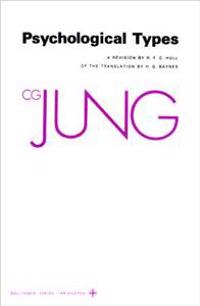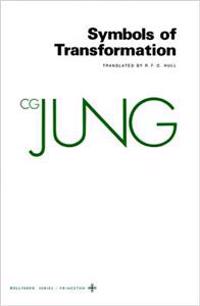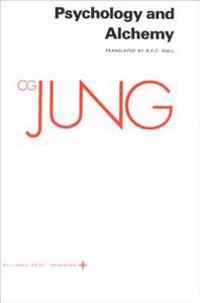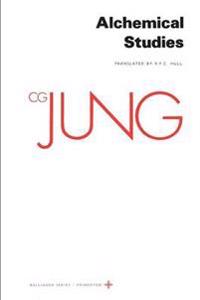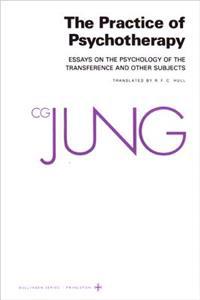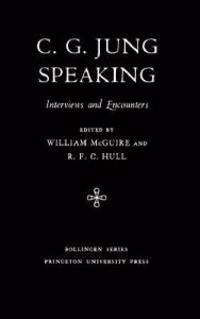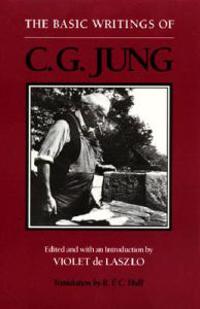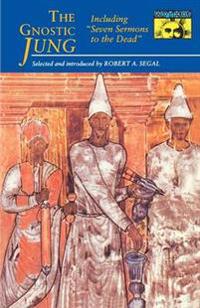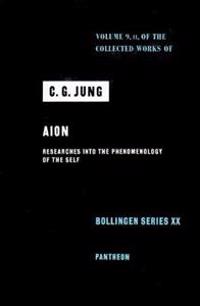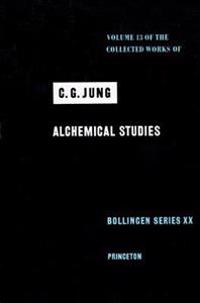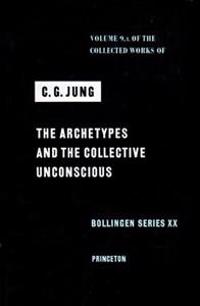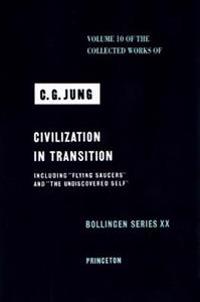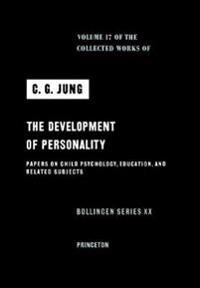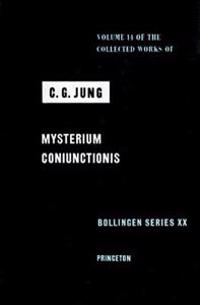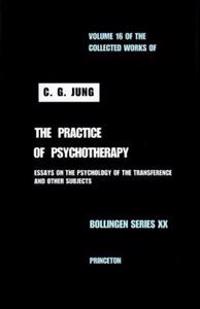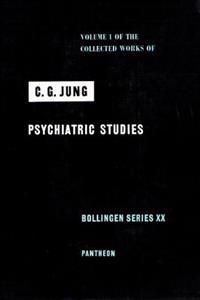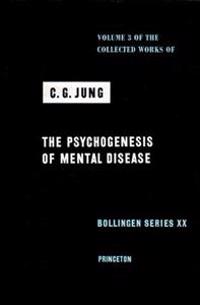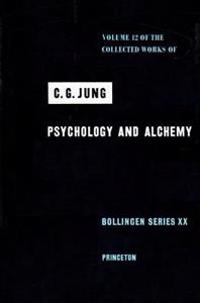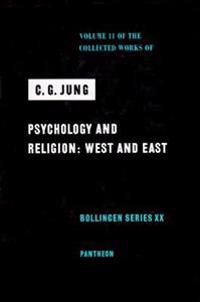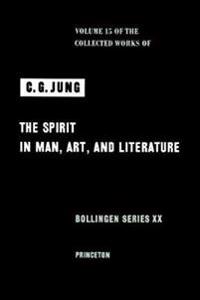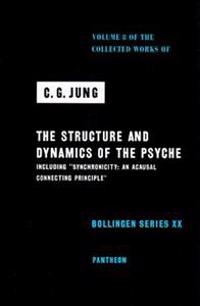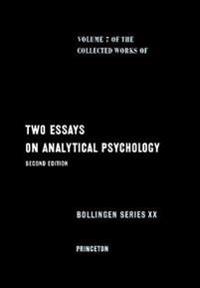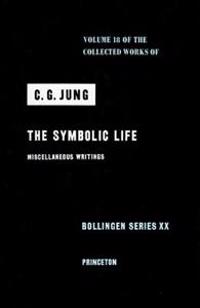Collected Works of C.G. Jung, Volume 6: Psychological Types (Häftad)
avCarl Gustav Jung, C. G. Jung, Michael Fordham
ISBN: 9780691018133 - UTGIVEN: 197610One of the most important of Jung's longer works, and probably the most famous of his books, "Psychological Types" appeared in German in 1921 after a "fallow period" of eight years during which Jung had published little. He called it "the fruit of nearly twenty years' work in the domain of practical[...]
Collected Works of C.G. Jung, Volume 5: Symbols of Transformation (Häftad)
avCarl Gustav Jung, C. G. Jung, Michael Fordham
ISBN: 9780691018157 - UTGIVEN: 197701A complete revision of "Psychology of the Unconscious" (orig. 1911-12), Jung's first important statement of his independent position.[...]
Collected Works of C.G. Jung, Volume 12: Psychology and Alchemy (Häftad)
avCarl Gustav Jung, C. G. Jung, Herbert Edward Read
ISBN: 9780691018317 - UTGIVEN: 198010Over one hundred forty items, representative of Jung's interests and professional activities and spanning sixty years, include lectures, forewords, reviews, articles, and letters[...]
Collected Works of C.G. Jung, Volume 13: Alchemical Studies (Häftad)
avCarl Gustav Jung, C. G. Jung, Jung
ISBN: 9780691018492 - UTGIVEN: 1983-08Five long essays that trace Jung's developing interest in alchemy from 1929 onward. An introduction and supplement to his major works on the subject, illustrated with 42 patients' drawings and paintings.[...]
Collected Works of C.G. Jung, Volume 16: Practice of Psychotherapy (Häftad)
avCarl Gustav Jung, C. G. Jung, R. F. C. Hull
ISBN: 9780691018706 - UTGIVEN: 1985-12Essays on aspects of analytical therapy, specifically the transference, abreaction, and dream analysis. Contains an additional essay, "The Realities of Practical Psychotherapy," found among Jung's posthumous papers.[...]
C.G. Jung Speaking: Interviews and Encounters (Häftad)
avC. G. Jung, William McGuire
ISBN: 9780691018713 - UTGIVEN: 198702A collection of journalistic interviews which span Jung's lifetime. This book captures his personality and spirit in more than 50 accounts of talks and meetings with him. They range from transcripts of interviews for radio, television, and film to memoirs written by notable personalities.[...]
The Basic Writings of C.G. Jung: (Revised R.F.C. Hull Translation) (Häftad)
avCarl Gustav Jung, C. G. Jung, Violet S. De Laszlo
ISBN: 9780691019024 - UTGIVEN: 1991-05In exploring the manifestations of human spiritual experience both in the imaginative activities of the individual and in the formation of mythologies and of religious symbolism in various cultures, C. G. Jung laid the groundwork for a psychology of the spirit. The excerpts here illuminate the conce[...]
The Gnostic Jung: Selections from the Writings of C.G. Jung and His Critics (Häftad)
avCarl Gustav Jung, C. G. Jung, Robert A. Segal
ISBN: 9780691019239 - UTGIVEN: 199206Gnosticism, together with alchemy, was for C. G. Jung the chief prefiguration of his analytical psychology. Jung did not simply interpret Gnostic texts psychologically but also cited them as confirmation of his psychology. An authority on theories of myth and Gnosticism, Robert Segal has searched th[...]
Collected Works of C.G. Jung, Volume 9 (Part 2): Aion: Researches Into the Phenomenology of the Self (Inbunden)
avCarl Gustav Jung, C. G. Jung, Michael Fordham
ISBN: 9780691097596 - UTGIVEN: 196901"Aion," originally published in German in 1951, is one of the major works of Jung's later years. The central theme of the volume is the symbolic representation of the psychic totality through the concept of the Self, whose traditional historical equivalent is the figure of Christ. Jung demonstrates [...]
Collected Works of C.G. Jung, Volume 13: Alchemical Studies (Inbunden)
avCarl Gustav Jung, C. G. Jung, Adler Gerhard
ISBN: 9780691097602 - UTGIVEN: 196802Five long essays that trace Jung's developing interest in alchemy from 1929 onward. An introduction and supplement to his major works on the subject, illustrated with 42 patients' drawings and paintings.[...]
Collected Works of C.G. Jung, Volume 9 (Part 1): Archetypes and the Collective Unconscious (Inbunden)
avCarl Gustav Jung, C. G. Jung, Michael Fordham
ISBN: 9780691097619 - UTGIVEN: 1969-01Essays which state the fundamentals of Jung's psychological system: "On the Psychology of the Unconscious" and "The Relations Between the Ego and the Unconscious," with their original versions in an appendix.[...]
Collected Works of C.G. Jung, Volume 10: Civilization in Transition (Inbunden)
avC. G. Jung, Herbert Edward Read, , Bollingen Series, 20
ISBN: 9780691097626 - UTGIVEN: 197008Essays bearing on the contemporary scene and on the relation of the individual to society, including papers written during the 1920s and 1930s focusing on the upheaval in Germany, and two major works of Jung's last years, "The Undiscovered Self" and "Flying Saucers."[...]
Collected Works of C.G. Jung, Volume 17: Development of Personality (Inbunden)
avCarl Gustav Jung, C. G. Jung, Michael Fordham
ISBN: 9780691097633 - UTGIVEN: 195409Papers on child psychology, education, and individuation, underlining the overwhelming importance of parents and teachers in the genesis of the intellectual, feeling, and emotional disorders of childhood. The final paper deals with marriage as an aid or obstacle to self-realization.[...]
Collected Works of C.G. Jung, Volume 14: Mysterium Coniunctionis (Inbunden)
avCarl Gustav Jung, Lawrence Danson, C. G. Jung
ISBN: 9780691097664 - UTGIVEN: 197009Jung's last major work, completed in his 81st year, on the synthesis of the opposites in alchemy and psychology.[...]
Collected Works of C.G. Jung, Volume 16: Practice of Psychotherapy (Inbunden)
avCarl Gustav Jung, C. G. Jung, Michael Fordham
ISBN: 9780691097671 - UTGIVEN: 196606Essays on aspects of analytical therapy, specifically the transference, abreaction, and dream analysis. Contains an additional essay, "The Realities of Practical Psychotherapy," found among Jung's posthumous papers.[...]
Collected Works of C.G. Jung, Volume 1: Psychiatric Studies (Inbunden)
avCarl Gustav Jung, C. G. Jung, Gerhard Adler
ISBN: 9780691097688 - UTGIVEN: 197007Over one hundred forty items, representative of Jung's interests and professional activities and spanning sixty years, include lectures, forewords, reviews, articles, and letters[...]
Collected Works of C.G. Jung, Volume 3: Psychogenesis of Mental Disease (Inbunden)
avCarl Gustav Jung, C. G. Jung, Michael Fordham
ISBN: 9780691097695 - UTGIVEN: 1960-12This third volume of Jung's Collected Works contains his renowned monograph "On the Psychology of Dementia Praecox" (1907), described by A. A. Brill as indispensable for every student of psychiatry--"the work which firmly established Jung as a pioneer and scientific contributor to psychiatry." Also [...]
Collected Works of C.G. Jung, Volume 6: Psychological Types (Inbunden)
avCarl Gustav Jung, C. G. Jung, Michael Fordham
ISBN: 9780691097701 - UTGIVEN: 1971-08One of the most important of Jung's longer works, and probably the most famous of his books, "Psychological Types" appeared in German in 1921 after a "fallow period" of eight years during which Jung had published little. He called it "the fruit of nearly twenty years' work in the domain of practical[...]
Collected Works of C.G. Jung, Volume 12: Psychology and Alchemy (Inbunden)
avCarl Gustav Jung, C. G. Jung, William McGuire
ISBN: 9780691097718 - UTGIVEN: 196808A study of the analogies between alchemy, Christian dogma, and psychological symbolism. Revised translation, with new bibliography and index.[...]
Collected Works of C.G. Jung, Volume 11: Psychology and Religion: West and East (Inbunden)
avC. G. Jung, Michael Fordham
ISBN: 9780691097725 - UTGIVEN: 197001Sixteen studies in religious phenomena, including "Psychology and Religion" and "Answer to Job."
Collected Works of C.G. Jung, Volume 15: Spirit in Man, Art, and Literature (Inbunden)
avCarl Gustav Jung, C. G. Jung, Michael Fordham
ISBN: 9780691097732 - UTGIVEN: 196612Nine essays, written between 1922 and 1941, on Paracelsus, Freud, Picasso, the sinologist Richard Wilhelm, Joyce's Ulysses, artistic creativity generally, and the source of artistic creativity in archetypal structures.[...]
Collected Works of C.G. Jung, Volume 8: Structure & Dynamics of the Psyche (Inbunden)
avCarl Gustav Jung, C. G. Jung, Michael Fordham
ISBN: 9780691097749 - UTGIVEN: 197001A revised translation of one of the most important of Jung's longer works. The volume also contains an appendix of four shorter papers on psychological typology, published between 1913 and 1935.[...]
Collected Works of C.G. Jung, The: v. 5: Symbols of Transformation (Inbunden)
avC. G. Jung
ISBN: 9780691097756 - UTGIVEN: 1967-09-01Collected Works of C.G. Jung, Volume 7: Two Essays in Analytical Psychology (Inbunden)
avCarl Gustav Jung, C. G. Jung, Adler Gerhard
ISBN: 9780691097763 - UTGIVEN: 1967-02Provides insight into the development of Jung's thought on the psychology of the unconscious and its relation to the ego[...]
Collected Works of C.G. Jung, Volume 18: The Symbolic Life: Miscellaneous Writings (Inbunden)
avCarl Gustav Jung, C. G. Jung, William McGuire
ISBN: 9780691098920 - UTGIVEN: 197702This volume is a miscellany of writings that Jung published after the Collected Works had been planned, minor and fugitive works that he wished to assign to a special volume, and early writings that came to light in the course of research.[...]

